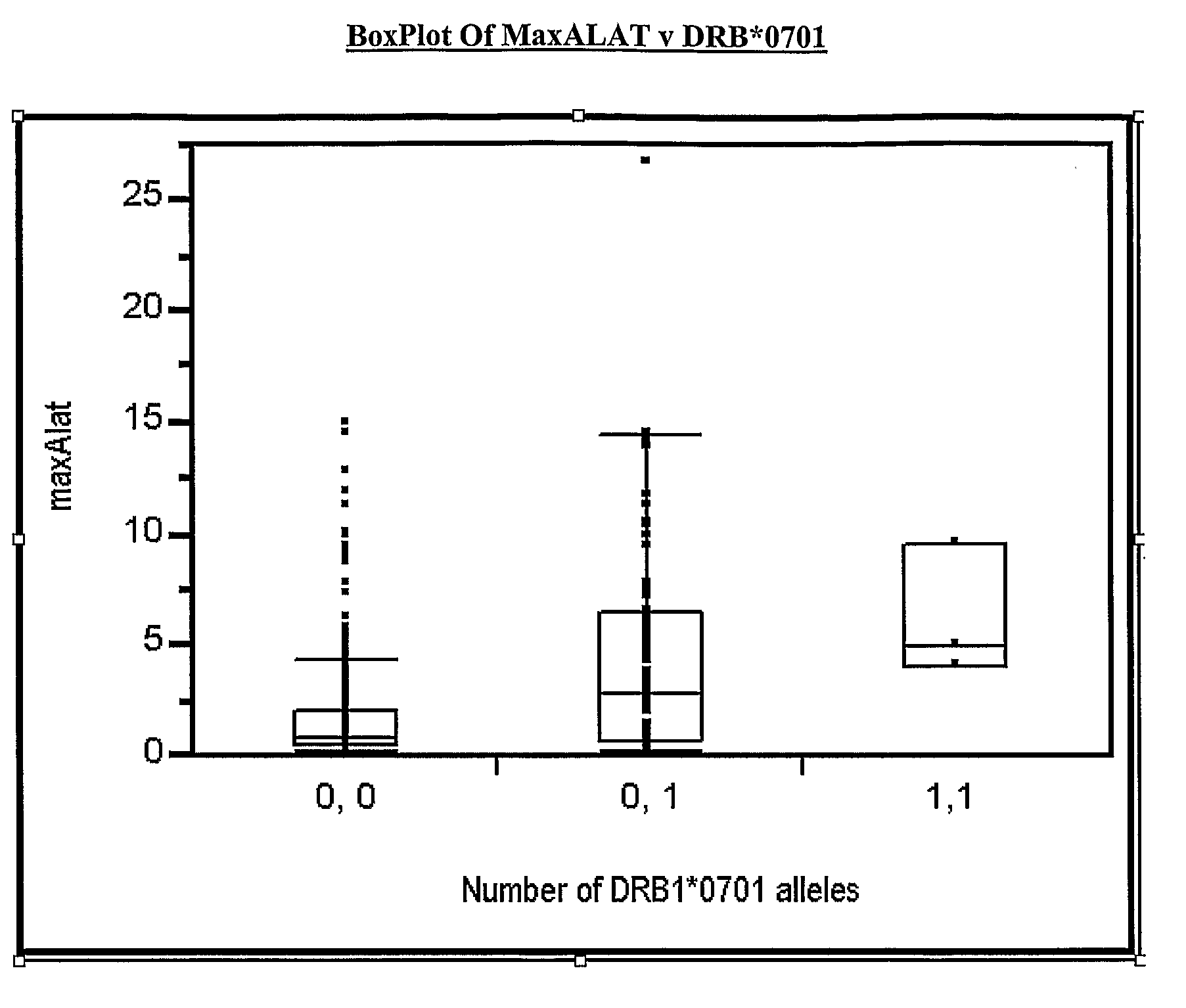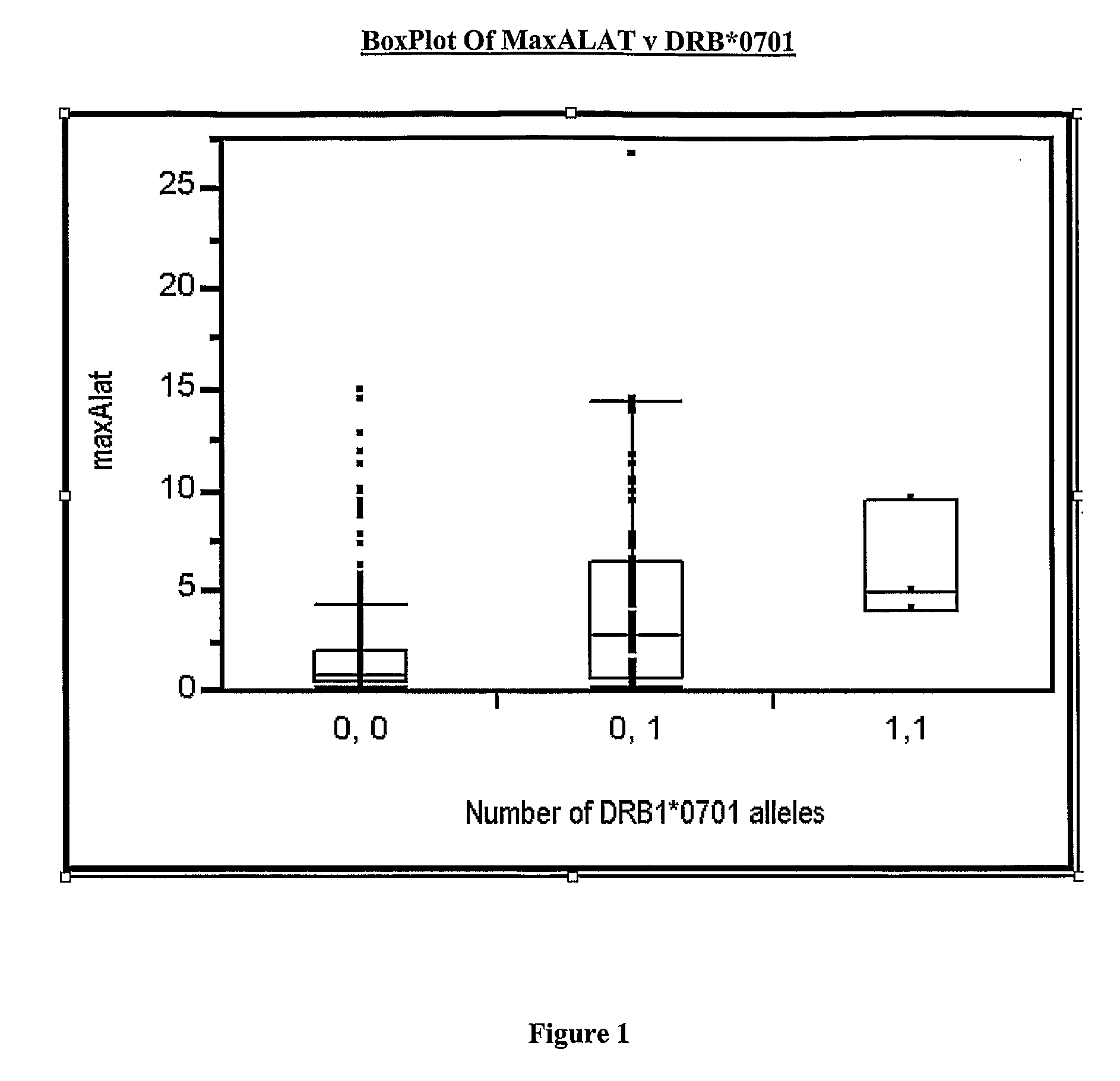Association between hla-drbi*07 allele and susceptibily to increased levels of alat following ximelagatran administration
a technology of ximelagatran and allele, which is applied in the field of association between hla-drbi* 07 allele and susceptibility to increased levels of alat following ximelagatran administration, can solve the problem that the patient's response to treatment with pharmaceuticals is often heterogeneous
- Summary
- Abstract
- Description
- Claims
- Application Information
AI Technical Summary
Benefits of technology
Problems solved by technology
Method used
Image
Examples
example 2
[0175]An additional 10 subjects, treated with ximelagatran, who had a transient increase of ALAT>4×ULN and thereafter returned to the baseline level at any time period during days 45-160 of treatment (cases) were compared with 16 subjects (controls) selected from the same studies but without ALAT increase during this period. None of these subjects had been included in the genetic analysis described in Example 1, and they were all from centres in Sweden (i.e. a genetically homogeneous population). Case-control status was used as the variable for statistical analysis and genetic markers that had been significantly associated in Example 1 were tested for replication (1-sided exact test). The results are shown in Table 4.
TABLE 4Test for replication of the association between DRB1*07 and markersin linkage disequilibrium with DRB1*07 and elevated ALATSNP (rs) / alleleP_min (case control)P_min (case control)IDin EXAMPLE 1in Example 2DRB1*079.11E−060.00597DQA1*021.30E−050.0059728588694.29E−04...
PUM
| Property | Measurement | Unit |
|---|---|---|
| molecular weight | aaaaa | aaaaa |
| frequency | aaaaa | aaaaa |
| nucleic acid determination | aaaaa | aaaaa |
Abstract
Description
Claims
Application Information
 Login to View More
Login to View More - R&D
- Intellectual Property
- Life Sciences
- Materials
- Tech Scout
- Unparalleled Data Quality
- Higher Quality Content
- 60% Fewer Hallucinations
Browse by: Latest US Patents, China's latest patents, Technical Efficacy Thesaurus, Application Domain, Technology Topic, Popular Technical Reports.
© 2025 PatSnap. All rights reserved.Legal|Privacy policy|Modern Slavery Act Transparency Statement|Sitemap|About US| Contact US: help@patsnap.com


